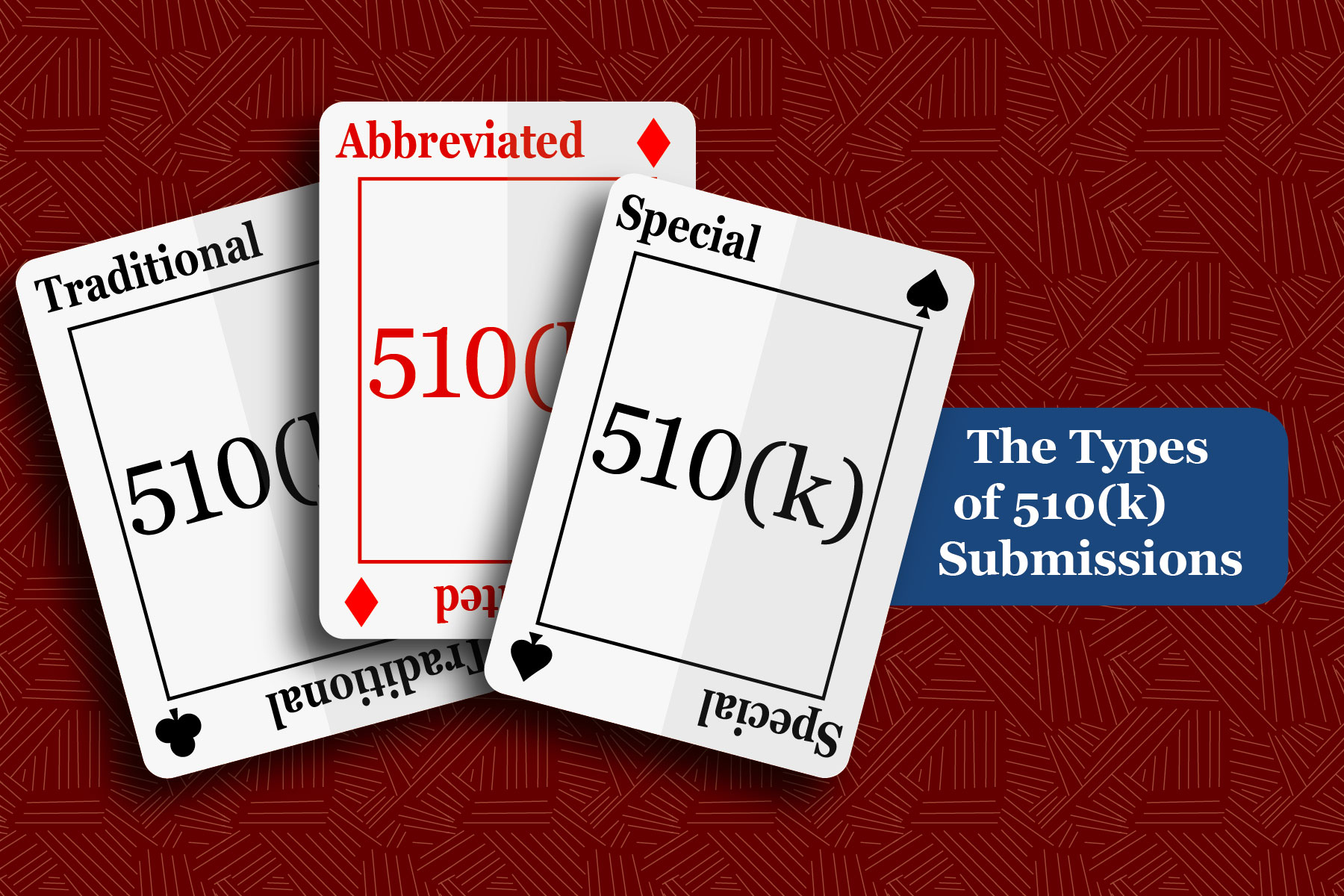For the most part, everyone in the medical device industry is familiar with the term “510(k)”, but not many people know that there are three different types of the premarket notification. The following are the different types of 510(k)’s a firm can submit: Traditional, special, and abbreviated. Each 510(k) is a premarket notification, which if cleared, grants the firm permission by the FDA to market the device; but each one has different benefits and processes that medical device firms can take advantage of.
The first, and most common, type is the traditional 510(k). The traditional 510(k) is used to show substantial equivalence with a predicate device already on the market concerning indications for use and technological characteristics. If you have a predicate device picked out, there are no mandated special circumstances or conditions to submit a traditional 510(k). There is also no special “form” to complete, a traditional 510(k) is simply a submission of all the information required under 21 CFR 807.87.1
A special 510(k) is commonly used when you want to make a change or modification to a device already on the market. The special program, established by the agency in 1998, was aimed at creating an efficient review process for device changes subject to 510(k) submission requirements. For a special 510(k), summary information resulting from the design control process can serve as the basis for substantial equivalence, along with the required information in 21 CFR 807.87. Information necessary for a special 510(k) submission includes: identifying and analyzing any risks associated with the change, the verification/validation methods with results, and the associated acceptance criteria. In general, a design controls program compliant with 21 CFR 820.30 should provide sufficient information for a special 510(k) submission. The average time for a Special review is roughly 50% of the Traditional review time; additionally, if the agency determines that the Special 510(k) is not appropriate, it will notify the submitter and convert it to a traditional.2
Finally, an abbreviated 510(k) is used for showing substantial equivalence to a recognized standard, special control, or guidance using a declaration of conformity. Despite the name, this type of submission is no shorter or easier than the traditional submission and typically takes twice as long for the agency to review. In an abbreviated submission, manufacturers prove substantial equivalence based on the use of guidance documents or declarations of conformity to recognized standards instead of a predicate device to facilitate the FDA’s review.3
The regulatory landscape for medical devices can be very confusing; and the variety of options FDA provides as a means of adding clarity can sometimes make it even more complex for manufacturers. If you need help deciding which 510(k) submission is right for your device, EMMA International has a team of experts ready to help. Give us a call at 248-987-4497 or email info@emmainternational.com to get connected with our regulatory experts.
1FDA (September 2019) How to Prepare a Traditional 510(k) retrieved on 08/26/2020 from: https://www.fda.gov/medical-devices/premarket-notification-510k/how-prepare-traditional-510k
2FDA (May 2020) How to Prepare a Special 510(k) retrieved on 08/26/2020 from: https://www.fda.gov/medical-devices/premarket-notification-510k/how-prepare-special-510k
3FDA (January 2019) How to Prepare an Abbreviated 510(k) retrieved on 08/26/2020 from: https://www.fda.gov/medical-devices/premarket-notification-510k/how-prepare-abbreviated-510k






